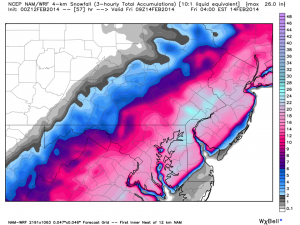HousingWire has been putting out some great pieces lately, looks like a set of new writers that aren’t taking a softball approach. Another great one:
1. The Subprime Majority
Recently, I came across a report by the Corporation for Enterprise Development (CFED) titled Assets and Opportunity Scorecard. Some of their findings are quite interesting. According to the CFED Scorecard, 56% of all consumers have sub-prime credit. Sub-prime is “earned”. A consumer has to miss a few payments, or default on a loan or two to earn that status. These 56% cannot, or should not, be taking on more debt, especially a large debt like a mortgage. They may also be struggling with a mortgage that they should not have taken out in the first place.
2. Liquid Asset Poor
CFED found that 44% of households in America are Liquid Asset Poor, defined as having saved less than three months of expenses. As one would expect, 78% of the lowest income households are asset poor, but 25% of middle class ($56k to $91k) households also have less than three months of expenses saved.
3. The Federal Reserve is Spent
QE1, 2 and 3 all involved the purchase of agency MBS. In January 2014, the FOMC announced that it will decrease debt purchases by another $10 billion, from the original $85 billion to $65 billion per month, $30 billion of which is supposed to be for agency MBS. That appears to be all talk. For the first six weeks of 2014, the Fed has already purchased $74.7 billion, or $54 billion per month. They are not only continuing the QE3 purchases, they are still replenishing the prepaid holdings from QE1 and QE2. Mortgage rates are not responding anymore. Though somewhat stabilized, the current rate (30yr) is still a full percent above the low recorded before QE3.
Furthermore, Fed members are only kidding themselves if they think they can ever tighten monetary policy. The national debt is at $17.3 trillion and growing at about $700 billion this year. The cost of financing this debt, per the Treasury, was $415.7 billion in 2013, crudely estimated at an average rate of about 2.5%. At the moment, the 3 months bill is at less than 0.2% interest, while the 10 year note is only at 2.75%. If the cost of financing this debt were to increase by just 1%, it would cost the Treasury $173 billion more a year. There is no way that the dovish Fed chair Yellen would even dream of doing that.
Therefore, the risk of monetary policy is not whether the Fed will tighten, but rather what it can do to repeat a 2008 style bailout. In other words, the Fed as a safety net is full of holes that are big enough for an elephant to pass through.
4. Exhausted Government Intervention
The FHFA just announced that HARP has reached the 3 million mark. We are no closer to reforming Freddie and Fannie than when they were put under conservatorship over five years ago. Numerous state and local governments have deployed their own foreclosure prevention laws and ordinances. The Consumer Finance Protection Bureau has created a mountain of bureaucratic red tape, adding compliance costs to the mortgage industry while providing questionable benefits to the consumer. The FHA is now pushing for lending to borrowers with credit scores as low as 580 only one year after major financial catastrophes such as foreclosure.
In conclusion, the reason I remain bearish on real estate is that when the noise is filtered out, the market has only survived by means of an unprecedented amount of intervention. This dependency is not only unhealthy, its stimulating effect is now fading. If real estate prices cease to appreciate, the market will suffer, same as it did when the sub-prime bubble burst in 2006/2007. The Fed has already gone all in and there is little left it can do. Washington can always create a new set of laws to further erode private property rights as we knew them. Ironically, price appreciation is also not the answer, as it will just widen the income equality gap, turning would-be home owners into rent slaves of Wall Street’s fat cats. It may be best for the market to freeze for an extended period and let consumers catch their breath.

